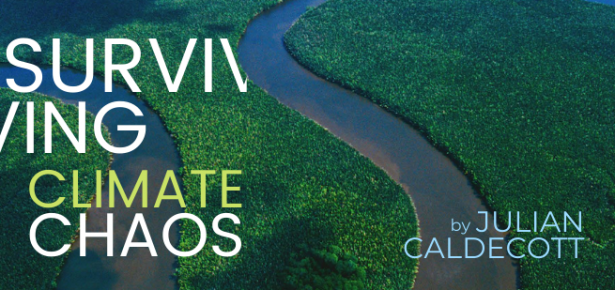
Surviving Climate Chaos is being published into a new world of lethal fires, floods and record-breaking temperatures, as well as frantic international negotiations before CoP 26 in Glasgow. This is while the IPCC warns us that we are in the last decade before Arctic, oceanic and equatorial tipping points take all choices out of human hands. This emergency calls for far greater focus and impact in our climate change response, and for the strengthening of communities and ecosystems everywhere against climate chaos.
What makes a good mitigation portfolio?
Surviving Climate Chaos is informed by what governments have been doing about climate change in the last few years. It draws on what we know about complex ecological and social systems, and how they respond to interference, impacts and opportunities to adjust and re-grow under pressure. And it matches this to the investments that offer most advantages for mitigation and adaptation. Thus, a good mitigation portfolio must make sense in the short, medium and long term, including quick solutions that buy time for strategic change to occur, and paying attention to biodiversity and other crises that are also underway. This requires choice awareness informed by realistic calculation of cost-effectiveness against the need for true net gains in GHG emissions, with maximum co-benefits for nature and the poor, adjusted for the global biophysical deadline imposed by impending tipping points. The last point requires everyone to agree on when the deadline is, at least for doing the sums, so that everyone’s different mitigation investments can be compared and added up. This is doable and essential, and needs to be agreed very soon if we’re to get a grip on climate change while we still can. Solving this problem is rather like that of measuring longitude in navigation: everyone had to agree on the Greenwich meridian, and then carry accurate clocks.
What makes a good adaptation portfolio?
Surviving Climate Chaos acknowledges that global heating will continue and that an unstable global climate is here to stay, probably for at least a century or two while the biosphere seeks a new equilibrium. It therefore focuses on a topic that not all governments yet embrace: the role of local communities in strengthening themselves against local chaos. It explains how and why it is relatively easy and cheap to encourage and enable communities to take charge of their own environments, to build solidarity, and to network with others. In this way, with government encouragement and modest support, they can do much of the heavy lifting on making whole countries more robust to sudden threats and impacts of all kinds and from all directions. This package of local empowerment and environmental education is key to strengthening rural and urban landscapes, especially when combined with new technologies that support citizen science, communication and participatory planning. Responsible aid agencies should finance these things through their adaptation strategies.
Limits to strength, pathways to peace.
There are limits to the speed and amount of change that even a strong community with healthy ecosystems can survive. Governments and their partners in sustainable development will therefore have to work to slow things down and prevent runaway change in the biosphere. This demands an awareness of global deadlines and the absolute need to postpone them, the value of co-benefits and nature-based solutions, and the principles of true net negative emissions and cost-effectiveness in obtaining them. It also requires focused efforts to strengthen human and natural systems, to take advantage of synergies between mitigation and adaptation, and to restore functioning ecosystems wherever these have been lost or damaged. Surviving Climate Chaos spells out how to build such a balanced and effective climate change response, and why success can open the door to a sustainable peace with nature. It also explains how building that future requires us to abstain from doing anything that destroys options and closes down pathways to eventual peace.
Title: Surviving Climate Chaos by Strengthening Communities and Ecosystems
Author: Julian Caldecott
Paperback ISBN: 9781108793780
Hardback ISBN: 9781108840125
Latest Comments
Have your say!